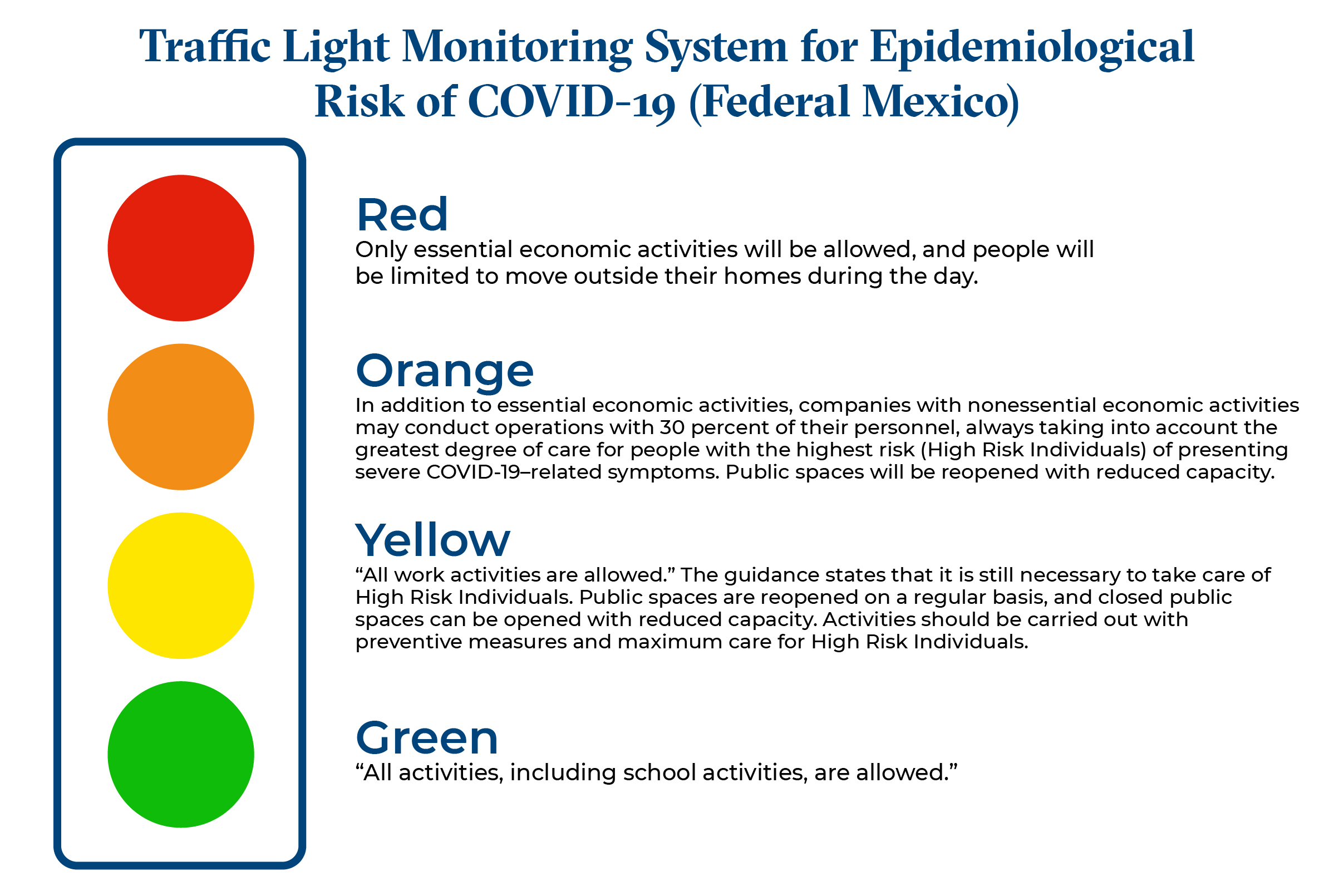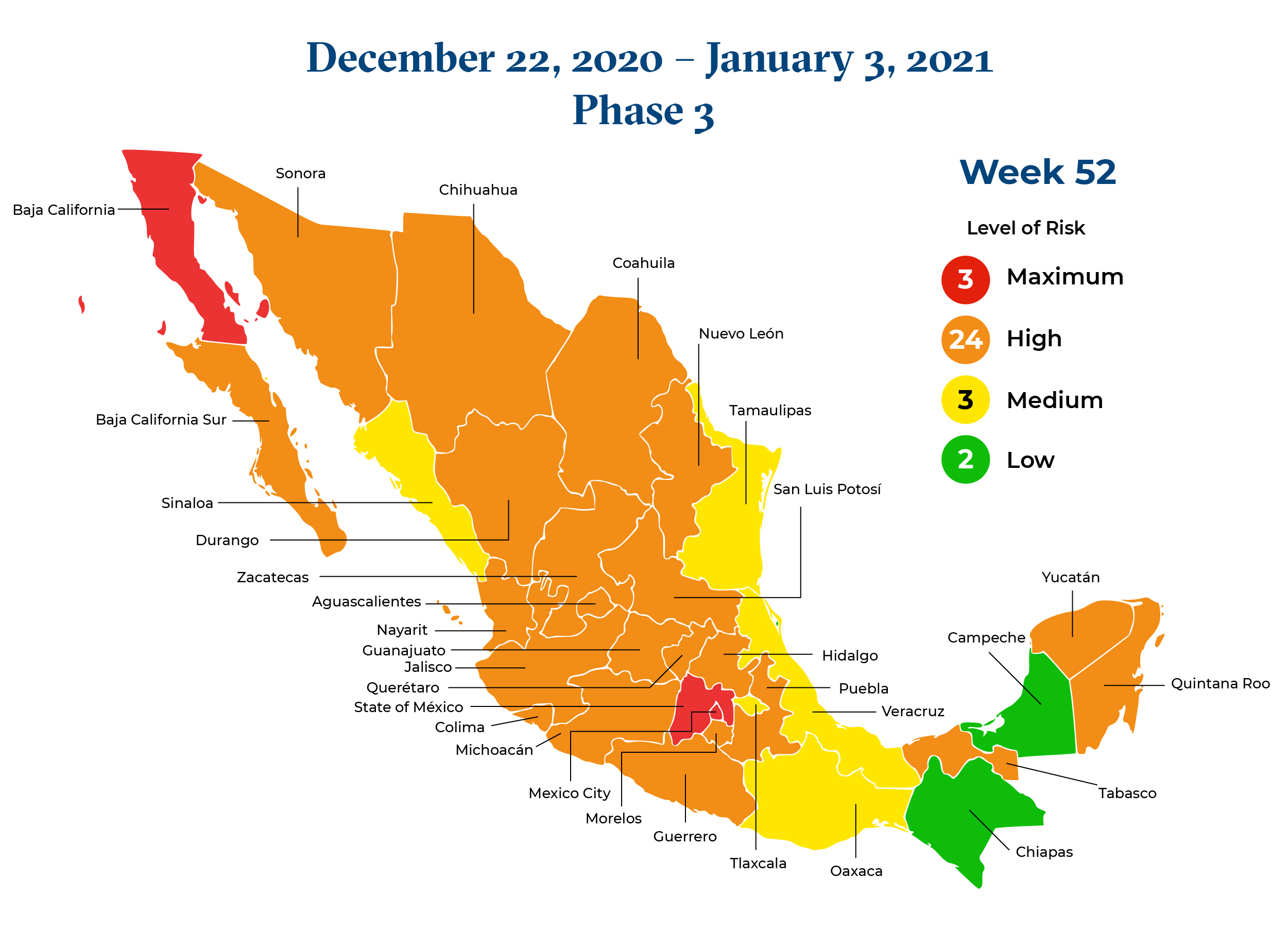Confirmed positive cases of COVID-19 in Mexico increased to more than 1.3 million as of December 18, 2020, according to Mexico’s Ministry of Health, prompting the federal government to designate the majority of states at high risk of spread of the virus according to the nation’s four-tiered “traffic light” pandemic monitoring system.
The twice-monthly monitoring system was implemented in June 2020, and is used to alert residents to the epidemiological risks, and provide guidance on restrictions on certain activities, in each of the country’s 32 states, including Mexico City. Below is a map for the period of December 21, 2020, through January 3, 2021, indicating the COVID-19 risk level in each of the states and the capital.
The states of Baja California and State of Mexico, as well as Mexico City, are in red status, indicating a closure of all nonessential activities. Red status also indicates that individuals at heightened risk of contracting COVID-19 who can work remotely are obligated to telework. The state of Mexico and Mexico City are implementing the red traffic light status for a three-week period, from December 19, 2020, through January 10, 2021.
Among the 24 states in orange status, 6 have issued a “red alert,” including Aguascalientes, Guanajuato, Hidalgo, Querétaro, Sonora, and Zacatecas. A red alert is a warning that a state’s traffic light status could change to red if cases of COVID-19 continue to rise. Guanajuato has already announced that it will enter red light status from December 28, 2020, through January 10, 2021. In addition, 3 states issued a “yellow alert” and 2 issued “green alerts.”
This chart presents the traffic light status of each state, and, as applicable, variations between federal and local traffic light statuses based on publications of the federal Ministry of Health and status reports provided by each state.
Ogletree Deakins will continue to monitor and report on developments with respect to the COVID-19 pandemic and will post updates in the firm’s Coronavirus (COVID-19) Resource Center as additional information becomes available. Important information for employers is also available via the firm’s webinar and podcast programs.









